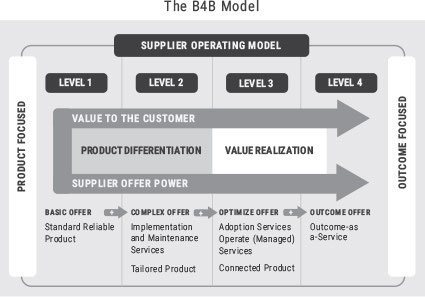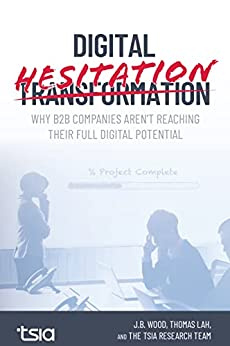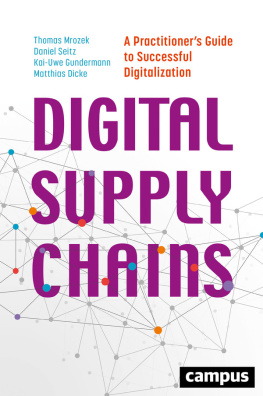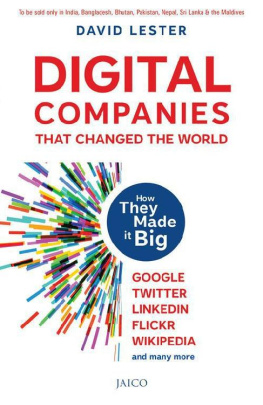Thomas Lah - Digital Hesitation: Why B2B Companies Arent Reaching Their Full Potential
Here you can read online Thomas Lah - Digital Hesitation: Why B2B Companies Arent Reaching Their Full Potential full text of the book (entire story) in english for free. Download pdf and epub, get meaning, cover and reviews about this ebook. year: 2022, publisher: Point B, Incorporated, genre: Business. Description of the work, (preface) as well as reviews are available. Best literature library LitArk.com created for fans of good reading and offers a wide selection of genres:
Romance novel
Science fiction
Adventure
Detective
Science
History
Home and family
Prose
Art
Politics
Computer
Non-fiction
Religion
Business
Children
Humor
Choose a favorite category and find really read worthwhile books. Enjoy immersion in the world of imagination, feel the emotions of the characters or learn something new for yourself, make an fascinating discovery.
- Book:Digital Hesitation: Why B2B Companies Arent Reaching Their Full Potential
- Author:
- Publisher:Point B, Incorporated
- Genre:
- Year:2022
- Rating:4 / 5
- Favourites:Add to favourites
- Your mark:
- 80
- 1
- 2
- 3
- 4
- 5
Digital Hesitation: Why B2B Companies Arent Reaching Their Full Potential: summary, description and annotation
We offer to read an annotation, description, summary or preface (depends on what the author of the book "Digital Hesitation: Why B2B Companies Arent Reaching Their Full Potential" wrote himself). If you haven't found the necessary information about the book — write in the comments, we will try to find it.
Digital Hesitation: Why B2B Companies Arent Reaching Their Full Potential — read online for free the complete book (whole text) full work
Below is the text of the book, divided by pages. System saving the place of the last page read, allows you to conveniently read the book "Digital Hesitation: Why B2B Companies Arent Reaching Their Full Potential" online for free, without having to search again every time where you left off. Put a bookmark, and you can go to the page where you finished reading at any time.
Font size:
Interval:
Bookmark:
Why B2B Companies Arent
Reaching Their Full Potential
J.B. Wood
Thomas Lah
The TSIA Research Team
Copyright 2022 Technology & Services Industry Association
ISBN: 978-0-9860462-8-5 (hard cover)
ISBN: 978-0-9860462-6-1 (soft cover)
Library of Congress Control Number: 2022934906
All Rights Reserved. No part of this book may be reproduced or transmitted in any form or by any means, electronic or mechanical, by any information storage and retrieval system without written permission from the authors, except for the inclusion of brief quotations in a review.
Printed in the United States of America.
The predominant business model in an industry can change quickly. The rise of Netflix meant not only the death of Blockbuster, but it also constitutes a real threat to the future of movie theaters. The emergence of Uber didnt just hurt the taxi business, it contributed to the temporary bankruptcy of Hertz. And Amazon didnt just doom Barnes & Noble bookstores, it is threatening brick-and-mortar retail giants all over the world.
But weve always wonderedwhat was going through the minds of the executives at Hertz or Blockbuster at that time? Did they know their end was nigh? Did they realize their business model was being completely disrupted? Or did they just think they were losing a few orders?
Today almost every company is a tech company. And they are all riding a digital transformation (DT) wave that is disrupting the business and operating models of their industry. When DT marches through an industry, the results can be devastating to companies that are complacent. Digital capabilities upend the way customers buy and consume your products and services. Can you imagine being a bank without a mobile app today? A large retailer without an e-commerce site? And its not just business-to-consumer (B2C) companies. Will there be enterprise tech providers of tomorrow with which a customer cant scope, price, and place a complex order online? Or industrial equipment providers that dont use predictive analytics to completely eliminate customer outages?
One of the reasons that the term digital transformation has become so popular is because it is so vague. You can stuff just about any kind of digital project or investment under its purview, and it sounds progressive. But the reality is that meaningful DT usually shows up differently in each industry. The nature of the pivotal projects and the outcomes they deliver are based on how disruptive certain technology products and projects can be to the status quo of a particular marketplace. In consumer retail, DT has been synonymous with e-commerce and supply chain; not a different type of business, a different way of going to market. But, in other B2C industries, like transportation and hospitality, DT has brought entirely new forms of competition in the form of breakthrough ridesharing or home-sharing business models.
So, to be valuable, this book must be targeted. It is aimed at technology and industrial product companies that serve business customers, commonly referred to as business-to-business (B2B) companies. While there are certainly lessons here for companies in other industries, the B2B sectors will be our focus.
Before we go further, let us address a fair question: There is already a lot of literature about DT. So why are the perspectives in this book any better or more important?
Our company name, TSIA, stands for the Technology & Services Industry Association. We are an industry research firm that is under nondisclosure with hundreds of the worlds leading public companies in hardware and software technology, as well as industrial, healthcare, and B2B/B2C professional service markets. Each of these member companies agrees to provide non-public data to TSIA about its business practices and operating results. We have industry experts and data scientists who then compile and analyze that data. We are trying to answer a specific question: What business practices are working better than others in the real world? Then, we look at the actual financial and operating results being generated, and how much better they are than other practices that might not be considered best practices. Once we know there is a best practice that is actually worth pursuing, we identify the specific corporate capabilities that any one of our member companies would need to execute it. Armed with that insight, we can work with a specific company, tell it where it is today on the journey, whats missing, whats already good, what can be adapted, and what tactics, timelines, and returns it can expect along the way.
In short, TSIA has a unique perch. We have seen just about everything that is good, bad, and missing from the DT of hundreds of the globes most important companies. That includes the new companies that are trying to disrupt the old ones, the old ones that are fighting off the new ones, and all the companies that see opportunity in software and the cloud. In short, we have unparalleled facts and insights that are derived from this amazing business communityprobably more facts and more insight than any other source. And, most importantly, its real-world stuff. We dont share a member companys data with the public, which includes customers, analysts, or the media. If a TSIA member company is exaggerating its performance to TSIA, then it is just wasting its money. Its how our model works; its a clean, safe place to tell the truth about the challenges of business evolutions big and small, and then learn how the best companies in the world accelerate them. We are also obligated to connect dots that form patterns. If we combine what we see at one company with what we see at others, we can spot trends or possibilities, both productive and counterproductive, very early. Think of it as on-demand management insight.
Finally, TSIA is looking at DT from an executive leadership perspective, not an information technology (IT) perspective. While deciding, developing, and managing architectures, data models, applications, development operations, security, and so forthare all critical to effective DTwe are assuming companies can get that job done. What we want executives to do with this book is to think big, and then effectively set the conditions for success.
Before we move ahead, we must first go back a few years. In 2013, we published a best-selling tech book titled B4B: How Technology and Big Data Are Reinventing the Customer-Supplier Relationship. This book correctly predicted the (then) forthcoming evolution of B2B business models. Figure 1.1 shares a quick review.

FIGURE 1.1 The B4B Model
The B4B model allows companies to place part or all their portfolio into one of four levels. The level then clarifies the key value premise to the customer and how it should compete against rival offers at the same level. Offers that are designed to compete at higher levels require more advanced product capabilities and services. Most B2B companies and their channel partners traditionally operated as Level 1 or Level 2 suppliers. The hallmark of offers that compete at Level 1 and Level 2 is that they are products (hardware, software, systems) that are sold to and operated by the customer. While the supplier may offer services to get or keep the product operational, the customer assumes all the risk of turning its big capital-expenditure (CapEx) purchase into business outcome return on investment (ROI). In laymans terms, the customer paid for it, and it works. Whether the customer uses it very much or extracts value from it is up to them.
Font size:
Interval:
Bookmark:
Similar books «Digital Hesitation: Why B2B Companies Arent Reaching Their Full Potential»
Look at similar books to Digital Hesitation: Why B2B Companies Arent Reaching Their Full Potential. We have selected literature similar in name and meaning in the hope of providing readers with more options to find new, interesting, not yet read works.
Discussion, reviews of the book Digital Hesitation: Why B2B Companies Arent Reaching Their Full Potential and just readers' own opinions. Leave your comments, write what you think about the work, its meaning or the main characters. Specify what exactly you liked and what you didn't like, and why you think so.












